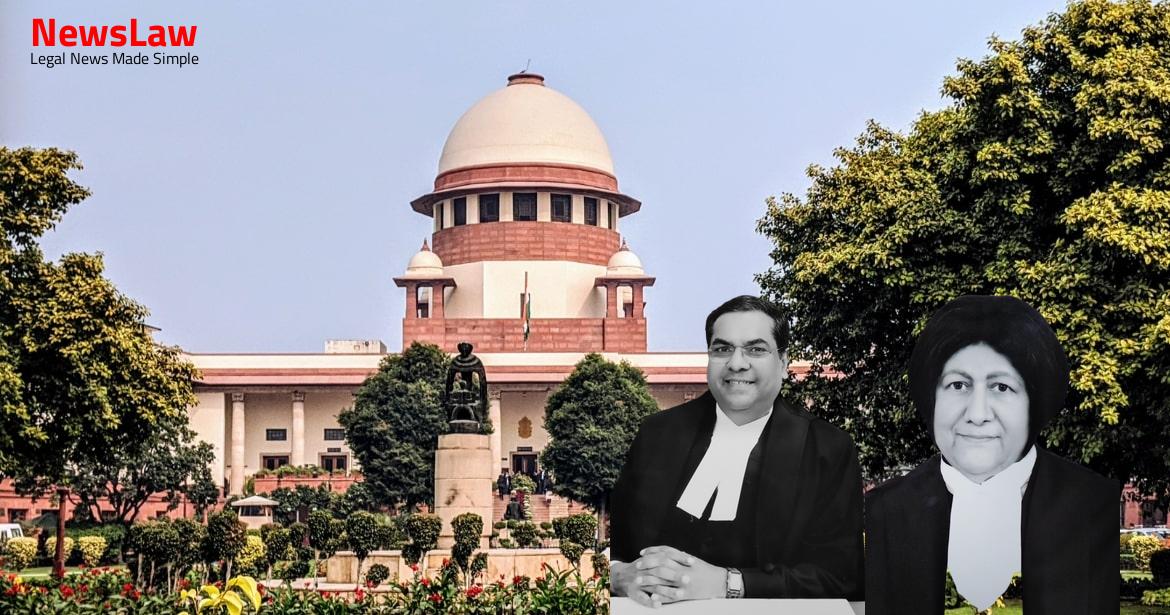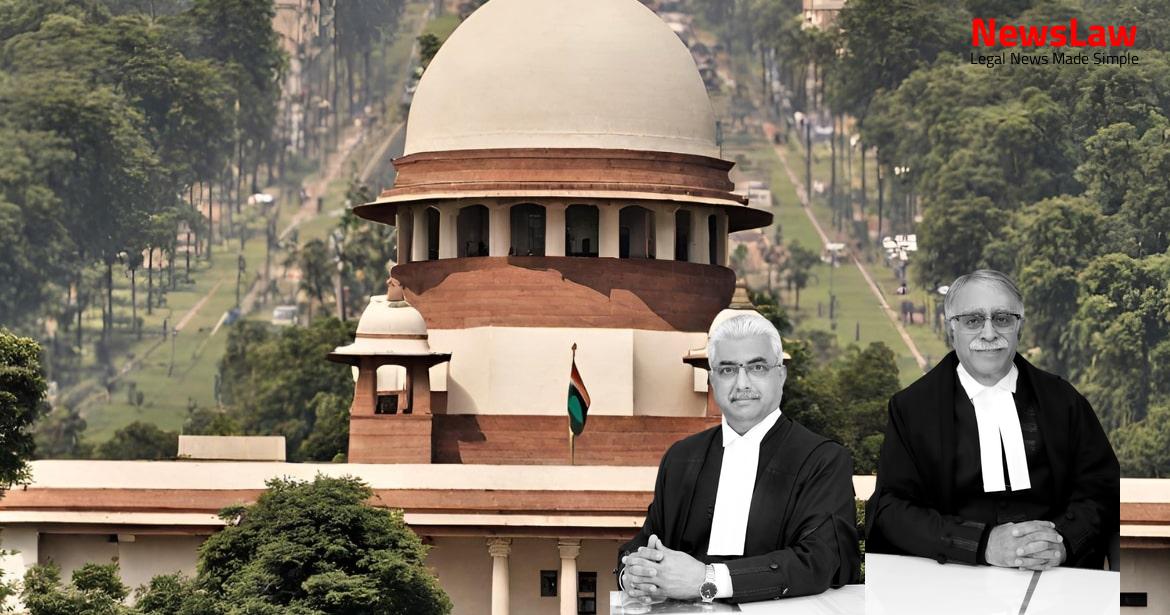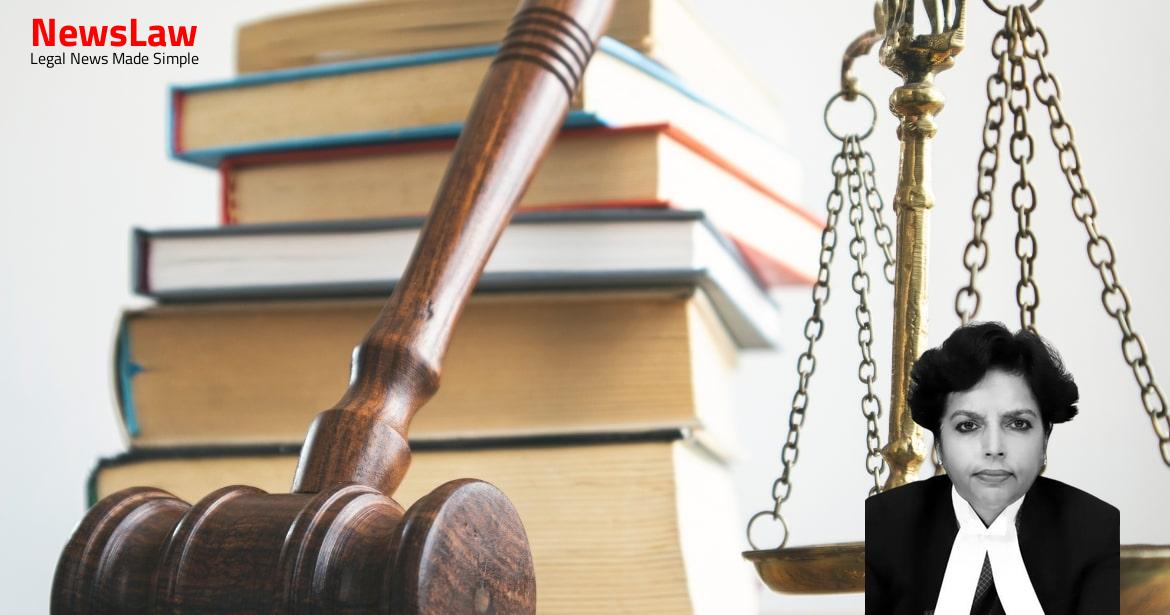In the case of State of Rajasthan vs. Islam & Ors., a key appeal has been made to reverse the acquittal of the accused. Mr. K.T.S. Tulsi, Senior Advocate, argues for the appellant in Criminal Appeal No. 417 of 2010, citing legal and factual errors in the High Court’s decision. The Supreme Court’s discretionary jurisdiction under Article 136 is crucial in ensuring justice is upheld. A careful examination of the evidence and potential procedural irregularities is underway to determine any miscarriage of justice.
Facts
- A1, A2, and A7 were charged with murder under Section 302 read with Section 34 of the IPC for the deaths of D1 and D2.
- The prosecution presented evidence of a conspiracy to kill D2 at the Malar Lodge Hotel in Karaikudi on 21.6.1990.
- Various witnesses provided testimony regarding the events leading up to and following the deaths, including purchase of a lorry, movements of the accused, and suspicious activities at the lodge.
- Injuries sustained by the deceased were analyzed to determine the possible cause of death, including being hit by a vehicle or thrown off.
- Allegations of enmity, property disputes, and financial motives were mentioned in relation to the case.
- Investigation details, witness testimonies, and actions taken by the police were highlighted throughout the proceedings.
- Postmortem examinations and forensic evidence were crucial in understanding the nature of the injuries sustained by the deceased.
- Mr. Tulsi argued that the accused had the motive and opportunity based on testimonies of PW-1, PW-3, and PW-29.
- Depositions of PWs 8, 16, 21, 23, and 24 implicated D1 and D2’s murder on the accused.
- The High Court overlooked the absence of direct evidence of conspiracy in circumstantial cases.
- Depositions from PW-22 to PW-27 strongly indicated the guilt of the accused.
- Mr. Tulsi highlighted the complete chain of circumstances and expert opinions linking the accused to the crime.
- The High Court found serious inconsistencies in the prosecution’s case and lack of conclusive evidence pointing to the accused’s guilt.
- The post mortem report revealed the cause of death for the deceased.
- Specific roles attributed to each accused completed the chain of circumstances linking them to the offense.
- The High Court was criticized for reversing the Trial Court’s judgment without sufficient grounds.
- A7’s death during proceedings led to the refund of any fines paid to his legal heirs.
- Evidence suggested the deceased did not die due to an accident.
- The accused filed Criminal Appeals in the High Court, leading to their acquittal and overturning of the Trial Court’s conviction.
Also Read: Analysis of Evidence in an Attempted Murder Case
Issue
- The issue at hand is whether the acquittal of Mr. John Doe in this case is liable to be set aside.
- The focus is on the grounds for the acquittal and if there are sufficient reasons to overturn it.
- The deliberation involves examining the evidence presented during the trial and any legal errors that may have occurred.
- The key question is whether there was a miscarriage of justice in the original acquittal of Mr. John Doe.
- The court will have to assess the credibility of witnesses, the validity of the defense, and any procedural irregularities during the trial.
Also Read: Ownership Dispute in Motor Vehicle Insurance Case
Arguments
- Mr. K.T.S. Tulsi, Senior Advocate representing the appellant in Criminal Appeal No.417 of 2010 argued that the High Court made a legal and factual error in acquitting the accused.
- The Supreme Court, although having discretionary jurisdiction under Article 136, must ensure no miscarriage of justice.
- In cases of mis-conceived and perverse decisions by the High Court, the Supreme Court can intervene under Article 136, as stated in State of Rajasthan vs. Islam & Ors.
- If the evidence on record clearly indicates that the acquittal cannot be sustained, the Supreme Court is obligated to set aside the acquittal.
- Direct evidence of conspiracy is almost never available
- Existence of conspiracy has to be inferred from the circumstances of the crime
- Cases like Vijay Shankar vs State of Haryana, Praful Sudhakar Parab vs State of Maharashtra, and Satish vs Nirankari vs State of Rajasthan support the inference of conspiracy from circumstances
- Evidence of an iron rod being recovered from A7 on 13.2.1991 was presented
- Evidence of property disputes between D2 and A3, as well as between D2 and A4, was highlighted by Mr. Tulsi
Also Read: Interpretation of Retirement Age in Government Service
Analysis
- Motive need not be proved when there is direct evidence.
- Circumstantial evidence must be cogently and firmly established, pointing unequivocally towards the guilt of the accused.
- Conviction cannot be based on suspicion, but must be proved beyond reasonable doubt.
- In an appeal against acquittal, interference is only warranted if there is perversity.
- The chain of evidence must be complete, leaving no room for any other reasonable conclusion than the guilt of the accused.
- Reversal of a judgment and order of conviction and acquittal of the accused should not be interfered with unless there is perversity.
- The prosecution has the burden of proving the guilt of the accused beyond all reasonable doubt.
- Enmity arising from property disputes may raise suspicion, but suspicion alone cannot lead to a conviction.
- All circumstances must conclusively point to the guilt of the accused, leaving no room for any other conclusion.
- The High Court set aside the judgment and order of conviction by the Trial Court
- The accused has been acquitted
- The possibility of the motorcycle being hit by an unknown vehicle was considered
- The death of the deceased was deemed as accidental
Decision
- The appeals have been dismissed.
- No merit was found in the appeals.
Case Title: BASHEERA BEGAM Vs. MOHAMMED IBRAHIM AND ORS (2020 INSC 116)
Case Number: Crl.A. No.-000417-000417 / 2010



